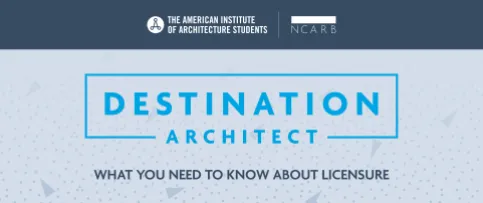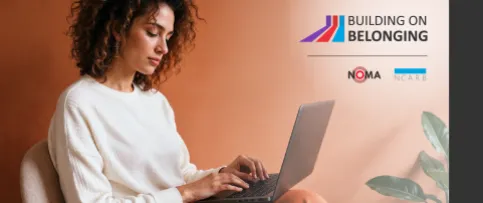The American Institute of Architecture Students’ (AIAS) Freedom by Design (FBD) program encourages students to put their skills to use by improving the safety and accessibility of homes and community spaces.
In 2016, NCARB began supporting the FBD program by donating over $100,000 in grants for building materials and facilitating mentorship opportunities with licensing board members. During the 2018-2019 school year, NCARB was able to provide grants to nearly 20 projects. With guidance from local architects and construction mentors, students worked in community-based design projects, while addressing barriers—whether it be physical, socio-economic, educational, environmental, or cultural.
The AIAS chapter at the University of Nevada, Las Vegas (UNLV), along with a group of local volunteers, worked together to build a new front yard for Casa de Luz, a community resource in the Meadows Village neighborhood. To accomplish this, they had to demolish the existing front yard and build a new sign, as well as revitalize landscaping and planters.
Project Director Maelle Egea, AIAS, Assoc. AIA, talks more about the project and the impact it had on the community.
What encouraged you to get involved with the Freedom by Design program?
I’ve always been interested in architecture as a way to serve communities through design. FBD provides a perfect opportunity to enhance your education and make a real community impact as a student. I believe it is incredibly important to take the initiative and seek the extra steps necessary to shape and enhance your education. Our FBD team, client, and community partners made the process incredibly rewarding. These experiences just don’t exist outside of school.
What is Casa de Luz?
Casa de Luz (translated to “House of Light” in Spanish) is a faith-based community resource center in the heart of Las Vegas’ Meadows Village. Casa, for short, offers various services to neighborhood families, including local outreach, worship services, food pantry services, community gardens, and special occasions or events.

Casa de Luz provides a place of safety, serenity, and hope for the neighborhood. It is a haven both for the residents who reside long-term and for the transient population. Casa is especially devoted to the children of the neighborhood—providing them with various after-school activities, tutoring, a youth group, and more. Parents can receive a full shopping cart worth of food once a month, with most items donated from Trader Joe’s and Three Square.
What steps and/or factors did your team consider when planning for this project?
When planning for our Casa project, we considered the overall feasibility in terms of scale, budget, donations, human power, and timeline. This was our school’s first FBD project in quite a few years, so we were starting from scratch. We originally had plans for a smaller project, but couldn’t pass up the opportunity to transform Casa’s entire front yard. Our budget stemmed from $500 made in t-shirt sales and our $1,000 NCARB grant. We knew we had to seek many donations from our community to make the project happen. Thankfully, our local AIAS and American Institute of Architects (AIA) chapters, as well as the Nevada State Board of Architecture, Interior Design and Residential Design, were able to help us recruit volunteers by showcasing and handing out our flyers. We also had friends and family members come out to volunteer. Lastly, we originally planned to keep this project within the fall semester, but extended into the spring to ensure we could deliver the best possible project.
How long did the Casa de Luz project take to complete?
Our Casa de Luz project took a total of five months to complete (October 2018-March 2019). We spent October through January designing, finding material and service donations, and planning the build days. Our design began with an initial charrette, and we continued to fine tune the design throughout the entire process based on our donations and feasibility. The charrette focused on plants, furniture, and seating arrangements. We then spent the next couple of months acquiring material and service donations, and once they were secured, we were able to plan and schedule the project accordingly.

The build took two weekends to complete. Day one consisted of demolition. Much of the original site was demolished, including the signage, concrete pad, pavers, and artificial turf. Day two focused on site grading. With the site having many imperfections that jeopardized the functionality of the space, our main priority was to completely level the site to ensure we were working with a clean slate. This was a first for many of us. Throughout the second day, we learned as we worked, with helpful professionals dropping by to teach us tricks of the trade. On day three, we focused on the install. The final day of construction consisted of planting and finishing planters. Our plants, which included agave, palo verde, and ocotillo, were all given new homes in the renovated space. After the planting process, planters were cladded with Cumaru wood to provide a comfortable surface to sit on. To conclude and celebrate our final day of construction, we hosted a “Paint and Pizza” party where children from the community came together to paint pots for their succulents while enjoying slices of pizza.
How do these types of community-based projects help architecture and design students jumpstart their career?
Community-based projects, such as those fostered through FBD, are a great way to jumpstart your architecture career. For instance, through our Casa de Luz project, we learned how to create community partners, work with other professionals, and work with a community organization as a client. Almost every single company we reached out to were willing to help instantly. We also got to work hand-in-hand with other trades such as contractors, a sign company, and a landscaping company. These types of projects allow students to gain firsthand experience in communicating and coordinating with all trades necessary to make any project come to life.
What was your favorite part about working on the Casa de Luz project?
My favorite parts about working on the Casa de Luz project were seeing how willing the Las Vegas community was to help, plus witnessing the impact the project had within the community, specifically at our “Pizza and Paint” welcome event. Within five months, we were able to acquire $21,000 worth of materials and services, a huge success made possible by our hard-working team and volunteers. More importantly, once the project was done, we got to see the renovated front yard utilized by neighborhood kids—a rewarding moment for all of us. Each time a member of the Casa community walked up to the new space, their faces instantly lit up. We are so grateful to have been given the opportunity to leverage the power and resources of FBD to make a difference at Casa de Luz and their community.

Whether you’re a student or an architect interested in supervising a project, reach out to your local AIAS chapter to learn how you can get involved with an FBD program or start your own.


